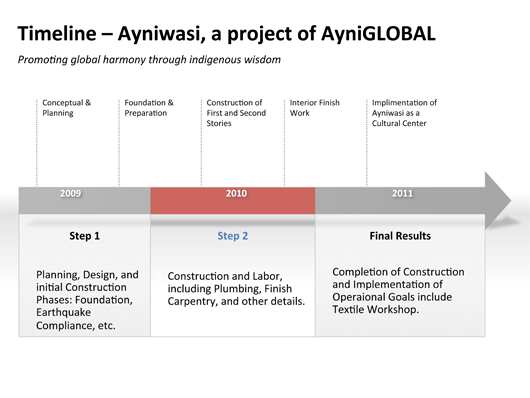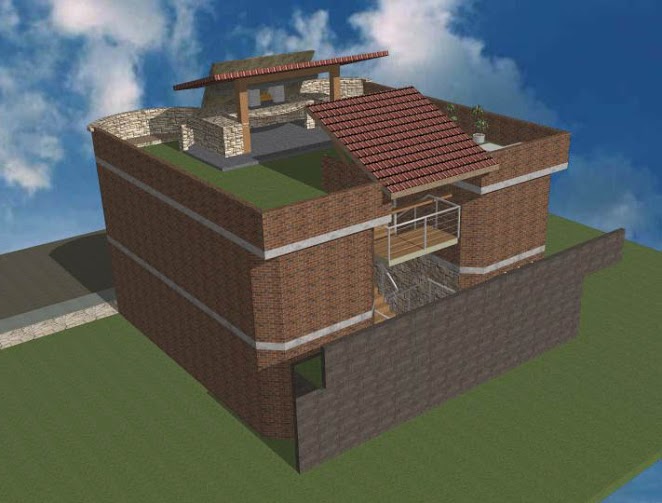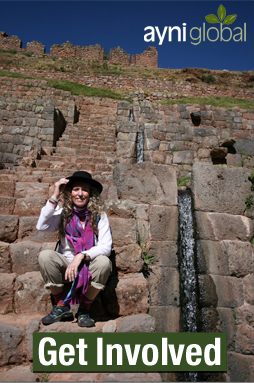Ayniwasi
Ayniwasi is our second building project in Tica Tica, near Cusco, Peru. It was designed by a local architect to withstand earthquakes. It faces south with a view of Apu Ausangate, the sacred mountain of the Andes. It serves as a residential and cultural center for Q’ero people of the community of Sebastian Pauccar Flores. It also has a spiritual purpose represented by the three levels of Incan cosmology.
Ayniwasi Description by Nicolas Pauccar Calcina
The Ayniwasi structure has three floors, each representing one of the three levels of the world in Incan cosmology.
The 1st level contains the textile workshop and is related to Uku Pacha. This is where things tend to be somewhat pesado (heavy) and where things are processed into form. The textile workshop represents the material world made from Llanka’y (labor), which leads to the next level, Yachay (knowledge).
The 2nd level is the Salon de Ayni, which is related to Kay Pacha, this world, and is represented by Kawsaypacha (lifespan). Since Ayni and Kawsaypacha form an interrelationship between matter and energy at all levels, over one’s lifetime they together promote balance and harmony. It is here that Sami (healing conscious awareness) may reach to super consciousness.
The 3rd level is a terrace with an offering table and a place to burndespachos (ceremonial offerings to Pachamama and the Apus). It is related to the Hanaq Pacha, the upper world. The offering area represents Kallpa (energy) that helps creates Munay (beauty) out of Kawsay (life).
Aspects of Ayniwasi
- The Ayniwasi Building Fund established in 2008
- Ayni Center for Shamanic Training and Healing (Salon de Ayni)
- Q’ero Textile Workshop (Taller de Textiles y Tejidos)
- Education: We currently support eight Q’ero children in private and public school and will expand to additional children.
- Archiving Q’ero Indigenous Wisdom and Ancestral Technology: We buy and receive as gifts artifacts, as well as collect photography and video, transcribed interviews including on sustainable practices.
- Indigenous and Community Health: Dr. Williams acts as primary physician when in Cusco attending individual health needs. Marybeth Bernard, MPH is our certified public health specialist. We will include local doctors and nurses in the near future.
- Research: Currently our efforts include ethnomedical fieldwork including botanical medicine, epidemiology, integration of indigenous medicine with conventional and alternative therapies like acupuncture.




